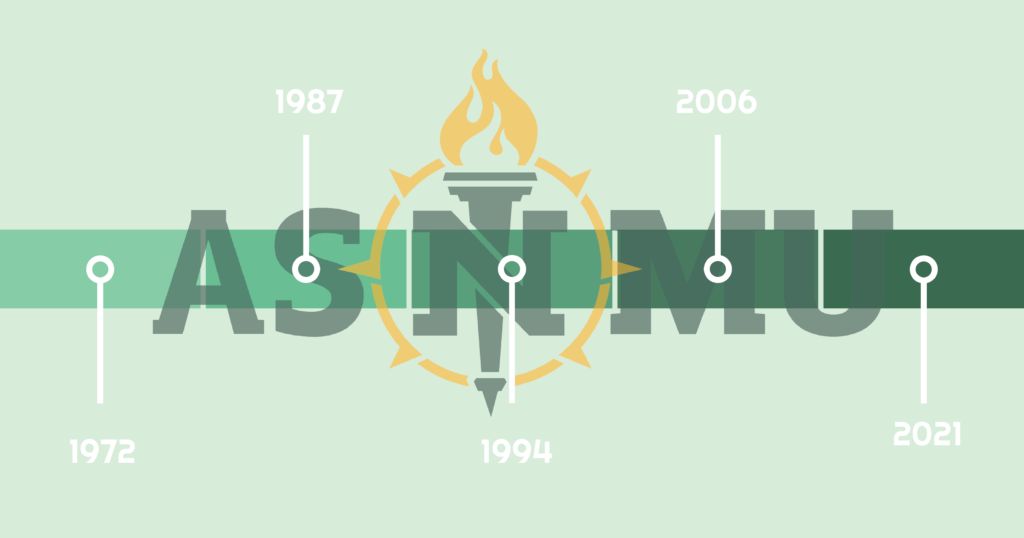
It’s not every day someone sees people chasing each other while wearing bright lime green bands and throwing marshmallows.
It is however a sight one would expect to see during NMU’s Humans versus Zombies (HvZ). But what is HvZ?
No, it’s not an apocalyptic event.
Junior entrepreneurship major and vice president of HvZ, Aubrey Kall, said HvZ is just a simple weeklong game of tag.
“It starts out with one person who is chosen as a zombie from a random drawing,” Kall said. “They spread the ‘disease’ throughout the week and see how many people they can tag and turn into zombies.”
Junior zoology major and president of HvZ Christopher Hatridge said the “disease” normally spreads through the use of Nerf guns, but because Nerf guns are not allowed on campus, the “disease” instead spreads with the use of marshmallows.
“The (HvZ) international organization suggests balled up socks,” Hatridge said. “I know that’s what Western uses in addition to Nerf guns but marshmallows are cheap and they come in all different shapes and sizes.”
Hatridge said players have to buy their own marshmallows and have had to find their own way of getting them in the past but the group is trying something new this year.
“This year we’re actually going to start selling them,” Hatridge said. “They’re going to be cheap. A quarter for a handful and we’re going to sell them prior to the missions.”
While players are “tagging” each other throughout the week, Hatridge said there are also missions that take place during the weeklong event. Hatridge said there is one at least once a day and two of the week’s days will hold two missions.
Hatridge said there is a competitive edge to the missions.
“Either you’re a zombie and you’re trying to make it so no humans survive the week or you’re a human and you’re trying to survive the week,” Hatridge said. “You’ve only survived the week if you attend the final mission and survive.”
Kall said humans are distinguished from zombies by lime green arm and head bands. Humans, Kall said, are identified by wearing the bands as an armband and zombies wear their band as a headband.
Kall said she would encourage participants to take part in the missions.
“You might be scared of getting tagged but that doesn’t mean you’re out of the game,” Kall said. “It just means you get to experience the other side so definitely participate in the missions. It will make the game a lot more fun.”
Kall also said while they can’t reveal this year’s final mission or provide any hints, it will be different than years past.
In 2012’s HvZ game, junior political science and accounting major Greg Wegener had the second highest number of zombie kills.
Wegener said he had no idea what to expect when he initially signed up but really enjoyed the game.
Wegener said he looks to see what type of marshmallow he’s up against before he attacks.
“If they have mini marshmallows, which I find cheap, they can hit you with a scatter shot that means I’m most likely going to die pretty quickly here,” Wegener said. If they have individual marshmallows, I will feel more strong to attack them.”
Wegener said anyone thinking about playing should just play. He said the worst that will happen is they won’t like it and can stop participating at any time.
Wegener said he has some advice for those seeking the top spot on the “Most Kills” leaderboard.
“Definitely go on a hunt,” Wegener said. “Know where the humans are at times. Don’t skip class but know when people are going to be coming out and pay attention to how humans would travel. Just try your hardest and have fun.”
Hatridge said those interested in playing can sign up at www.hvzsource.com/nmuhvz and have until 7 a.m. Monday, Oct. 28 to register. Hatridge said the game runs Monday, Oct. 28 through Friday, Nov. 1.
Kall said while there is no physical prize for winning the game, the pride felt from winning is enough within itself.
“It’s just for fun,” Kall said. “Just the pride of ‘Oh, humans won’ or ‘Oh, zombies won.’ It’s really fun during the final mission to watch the giant waves of humans getting tagged at once and watch their allegiance switch very quickly and cheering for [zombies] versus cheering for [humans].”




























